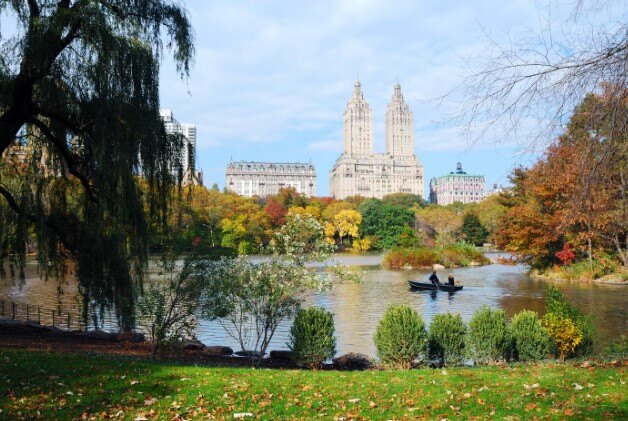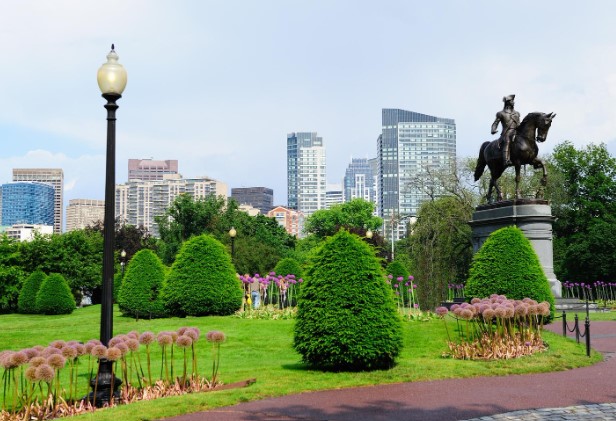Boston, a place where history, civilization, and nature meet, is Boston. It was established in 1634 and is noted for being the oldest public park in the United States. In nearly four centuries, Boston Common has gone through several transformations- colonial pasture, protest stage, grazing land, and green retreat. It continues to charm residents and tourists alike.
A Walk Through History
Since its founding, Boston Common has been used for many purposes. Originally, Puritan colonists purchased the land as a common open space. Early uses for this tract of land included the grazing of cattle, militia drills, and even public punishments.
During the Revolutionary period, the British troops encamped upon the Common; meanwhile, the colonials drilled their militia there. With the growth of Boston in the nineteenth century, the Common witnessed the cessation of grazing, the planting of tree-lined walks, the erection of fountains and statues, and was taken more and more into the full-hearted embrace of the city as a park.
Going on, Boston Common has been a platform for social change: Abolitionists, suffragists, civil rights activists, and contemporary protesters have used the Common to rally, speak, and influence public debate.
Boston Common Today
Nowadays, along with tree canopies and completely unregulated grass lawns, the Boston Common offers a plethora of public attractions and features that attract travelers and city dwellers alike throughout the seasons.
- Frog Pond: Perhaps the best of all attractions for year-round enjoyment. During the summer, it is a splash pool; in winter, an ice rink.
- Parkman Bandstand: Specifically, the Parkman Bandstand is often used for concerts, speeches, and free shows. In addition, it regularly hosts events and gatherings. Beyond that, it’s also a great spot to relax and enjoy the vibrant atmosphere.
- Monuments and Memorials: The Common also holds the Robert Gould Shaw Memorial (dedicated to the 54th Massachusetts Infantry), “The Embrace,” a newly unveiled bronze sculpture honoring Martin Luther King Jr. & Coretta Scott King, and several inscriptions associated with historical events.
- Open Green Space: For instance, the Common is ideal for picnics, reading, sunbathing, and informal gatherings. Additionally, its wide open areas frequently host events, performances, rallies, cultural festivals, and even free workout classes—weather permitting.
How to Experience Boston Common Like a Local
Here are tips to enjoy Boston Common beyond just the basic sightseeing:
- Beat the crowd: Early mornings or weekdays are better for maximum peace, except that in late afternoons during summer, it could become crowded near Frog Pond or the Bandstand.
- Explore the Freedom Trail: Since the trail starts right at Boston Common, the Common’s a good place to set off. Take your time to roam about the nearby sidewalks to find scattered historical markers in red brick and appreciate the architecture of colonial days.
- Think about the weather: In the winter, put on your warm coat and hit the frozen pond for skating. Summer brings sunscreen, spray, and evening gigs. Fall and spring, meanwhile, mean perfect colors for photo ops.
- Have a sneak peek at event listings: As a result, Boston Common is often put to work for public rallies, concerts, festivals, and even casual free performances. In addition, local websites or the Boston Parks & Recreation pages are usually up to date with event listings.
Why Boston Common Matters
Boston Common is not just a pretty green space. It holds deep cultural, civic, and environmental significance.
- Historical Importance: Because it has been an active public space since the 1600s, Boston Common reflects centuries of change in how Americans conceive public lands.
- Public Assembly & Free Speech: Throughout history, it has been used for protests, declarations, and speeches. Today, it remains a vital venue for democratic expression.
- Environmental & Social Value: The park offers urban green space, shade, recreation, and a break from the city hustle. Furthermore, it’s part of the “Emerald Necklace,” linked parks that together enhance Boston’s ecology and livability.

Visiting Boston Common: Practical Info
To make the most of your visit, here are some helpful facts:
| What | Detail |
| Location | Tremont St., Boston, MA; bordered by Beacon, Charles, Boylston, Tremont, and Park Streets. |
| Size | About 50 acres. |
| Hours | Open 24 hours, though specific features (Bandstand, Frog Pond, etc.) follow seasonal schedules. |
| Facilities | Walkways, benches, playgrounds, a skate rink, sports fields, restrooms, and a visitor center. |
| Access & Transit | Very accessible. Near Park Street and Boylston subway stops. Many bus and transit routes. Parking is limited; underground garage and metered street parking around. |
Tips & Best Practices for Visitors
Bring comfortable shoes; many paths are paved, but you’ll walk quite a bit.
- Dress for the weather—winter can be freezing, summer sun hot, and spring and fall often wet.
- Be mindful of events—sometimes large rallies or performances close off areas.
- Respect the grounds—public parks depend on volunteer and city maintenance. Therefore, clean up after yourself and follow park rules. click here
Boston Common in Culture & Memory
In fact, Boston Common frequently appears in literature, photography, art, and political memory. Moreover, it’s not just a park; it’s a symbol of early colonial settlement, the ongoing struggle for equality, and the enduring spirit of civic life in America.
For example, the Embrace sculpture adds a new layer of commemoration, reflecting civil rights history and recent societal dialogues. Moreover, every winter, the lighting of the Boston Common Christmas tree and the ice skating rink bring people together in a community celebration.
Final Thoughts
Boston Common is more than just a public space or historical landmark. It is a living, breathing piece of America’s story that continues to evolve. Whether you are a history lover, nature enthusiast, local seeking respite, or tourist exploring Freedom Trail highlights, Boston Common offers something for everyone.
If you go, plan your visit, explore thoroughly, and listen closely. You’ll walk away not only with pictures but with a deeper sense of place and heritage—because Boston Common doesn’t just sit in history; it lives in the life of Boston.


